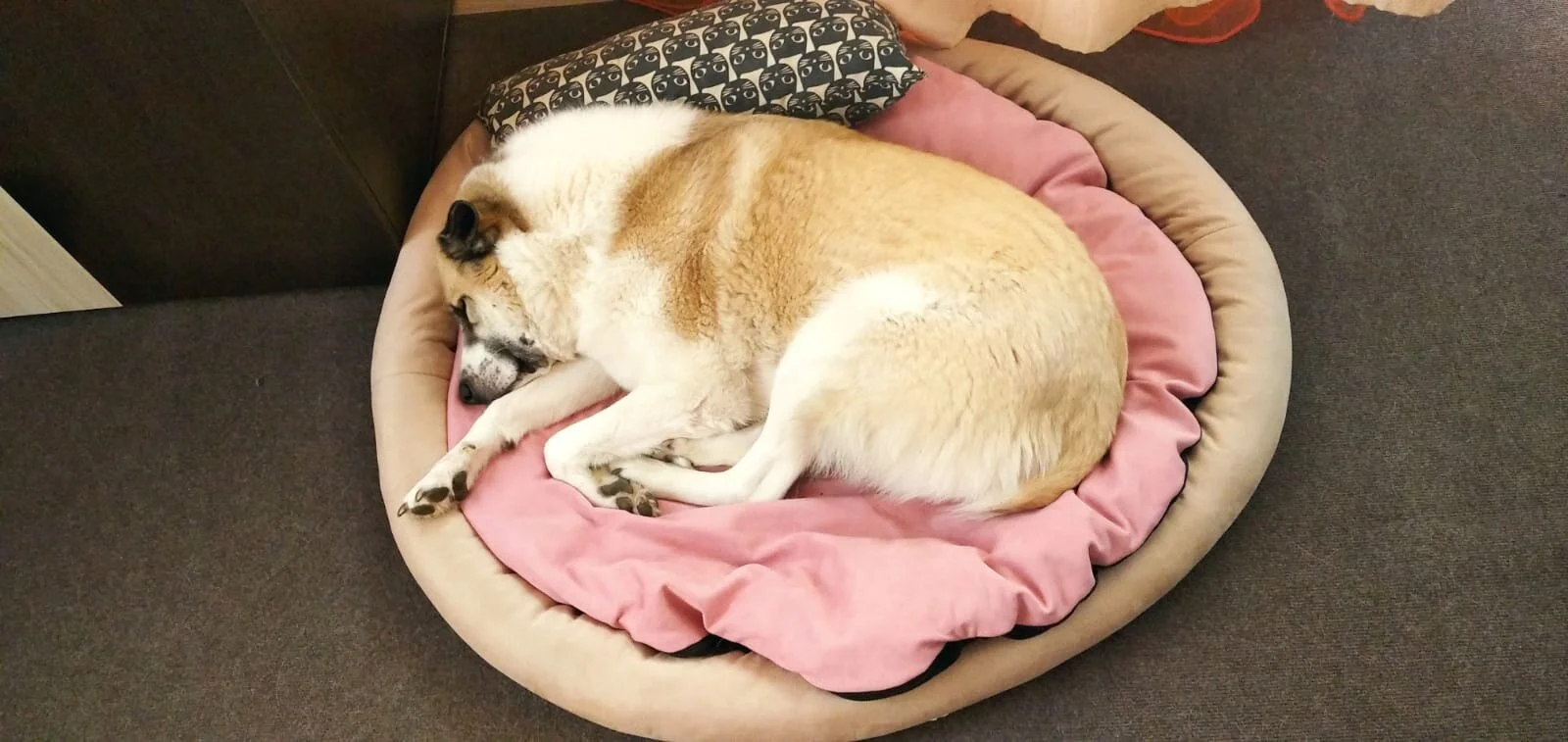Feeling Safe
The sense of security is one of the main pillars of well-being for us and our dogs. It is something we all need to function well and cope with life's challenges.
Our dogs' sense of safety depends on us in many ways. How can we improve it in our dogs' daily lives?
Heidi sleeping and feeling safe in her new bed
First of all, an individual that is NOT feeling safe will likely feel scared and stressed, while not feeling safe during long periods of times will cause chronic stress. This brings about health, behaviour and welfare issues. That is why our goal as dog guardians should be to ensure our dogs feel safe most, if not all of the time: at home, on walks and in other places outside the home.
While there are truly many factors that could make our dogs feel unsafe, we can definitely make certain choices to improve the life of our dogs. These include:
Learning to read canine body language to be able to recognize early signs of our dogs feeling uncomfortable or scared.
Giving our dog choices (as long as it’s safe). For example: where and how to sleep, what and where to eat without interference from other people or animals, being free to eliminate when necessary, selecting chews or toys, choosing which path to take on our walk and so on. A choice is only a choice when all outcomes are pleasant and safe, of course.
Focusing on building a kind and trusting relationship with our dogs without any punishment, verbal or physical. Trusting family members and knowing they will not be a source of danger is essential for a dog's sense of security.
Providing social contact with other dogs and people, and leaving the dog alone as little as possible. Dogs are social animals and being left alone is not only atypical for their species, it’s scary for them, especially for puppies, young and insecure dogs.
Making sure our dog is free from pain. Feeling ill or being in pain feels unsafe. Regular vet checks and observing your dog for any changes in movement or behaviour can help spot early signs of pain.
Using a longer leash (minimum 3 meters / 10 feet) will allow the dog to feel safer during walks. She will be able to move freely, to sniff, to think about the environment and to move away from things she might find worrying.
A well-fitted H harness also allows for freedom of movement and further improves dogs’ comfort.
Giving the dog oportunties to exhibit natural behaviours and make decisions without cues or commands makes for a more secure, confident dog. Examples can be safe opportunities for food foraging (treat searches, treat trees ...), digging, rolling in something interesting and playing.
Making sure there is nothing that scares the dog in the environment where she lives and visits regularly, for example during walks. Depending of the dog, scary things could be other animals, people, busy traffic areas, loud sounds etc. If something scary is in our home, we can remove it or plan accordingly (if our dog is afraid of the vacuum cleaner, one person vacuums while another takes the dog for a walk). If it is part of our walk, we can increase the distance or change our route to avoid it.
All of the components listed above are pieces of a puzzle and if they fall together we are likely to see a confident, calm and happy dog that is easy and pleasant to live with.
Ilaria and her lovely dog Kaia


